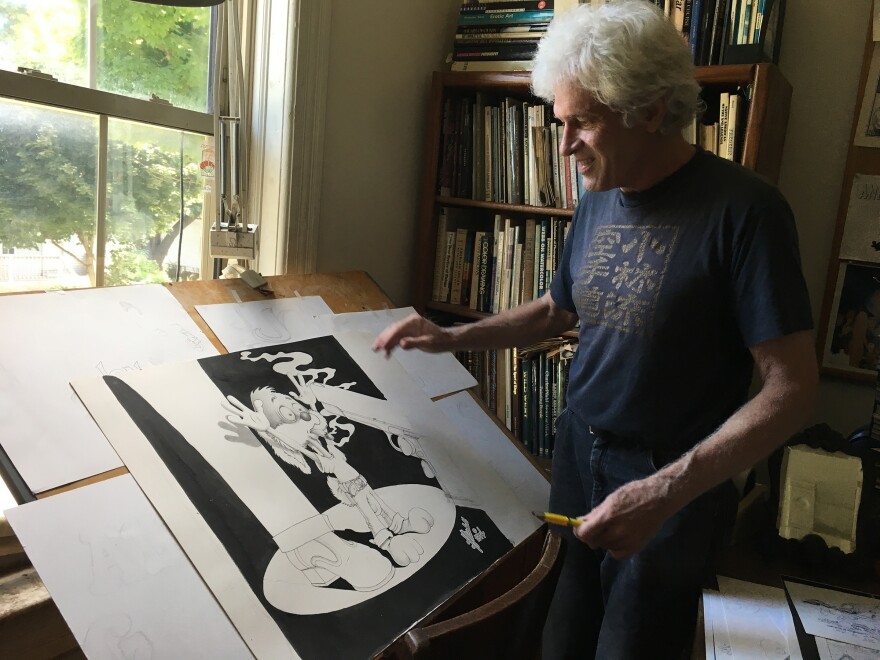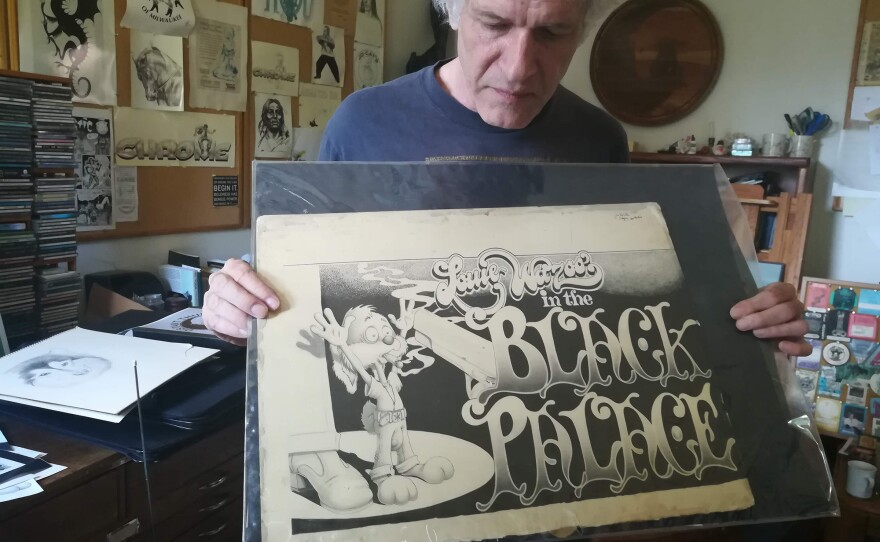The 1960s and '70s were a time of great change in the United States. The counterculture was well underway.
Amidst all of this, Jon Cervantes was a 15-year-old kid living in West Allis, Wis. Going to record shops and checking out "comix" was what he did religiously. But these weren't your typical family-friendly comics. These comics addressed daring themes like sex, drugs, and the Vietnam War. Which was exactly what Jon and others like him wanted.
"Here's Richard Nixon talking to John Lennon about the Vietnam War. All the kids wanted to see stuff like this. You couldn't get it in your Sunday funnies," he explains.

What Jon's describing is a very specific type of comics. Not your Batman and Robin typical hero comics. This was the complete opposite. This was underground comics with an "x."
Decades ago, in order to be published and stocked by retailers, comics had to get the stamp of approval from the Comics Code Authority (CCA).
Steve Englehart, a Marvel comic book writer, spoke about the CCA in History Channel documentary: "This was still the time of the Comics Code. The Comics Code had been instituted in the '50s because people were afraid that the youth of America was being corrupted by these evil comic books."
But artists rebelled. They went underground, creating a national movement that was marked by its brash political criticism, and innovative styles. What's often forgotten is the role local Milwaukee artists, like Jim Mitchell, played.

Curtis Carter, Marquette professor of philosophy and aesthetics, regards Jim as "Milwaukee's King of Comics."
"He's a very talented artist. His work was appreciated in the community and beyond," says Curtis.
Who was this local Milwaukee Legend? And where is he now? Turns out, he's right in Brewers Hill.
Jim was kind enough to invite us to his studio, which could double as a museum of comics and editorial cartoons. There are sketches and drawings full of his early work and more recent portraits.

There's one piece that was the cover of the 1970 Bugle American with Nixon, an American eagle, the GOP. Let's just say it isn't flattering to Nixon. And according to Jim, this is exactly why he started drawing in the first place.

"The comics I was doing out of kindness and then it gave me a medium to vent against what the government was doing," he says.
READ: Whatever Happened To Milwaukee's Alternative Newspaper Bugle American?
What he's referring to is the Vietnam War. People his age were getting drafted and sent to fight in a war they didn't understand, he says. Jim lent his voice to combat social and political malfeasance and made his mark nationally as did other underground artists.
But Curtis says that underground comix never succeeded in becoming a major art movement.
"The means and the market just sort of vanished. The vehicles for presenting it were limited and basically went away," says Curtis.
Underground comix were hard to get. They weren't everywhere. The main place back then was the Bugle American, an alternative newspaper in Milwaukee. And when that went under, it became even harder to get the comics. And then of course the demand changed. As the counterculture movement faded so did underground comix. Which Curtis says is what happens to most movements.

"Culture is always a moving thing and as it changes the ideas change. The images change. If the artist doesn't change with the times, their work becomes stagnant. An artist understands the larger culture and his and her own work," says Curtis.
The end of the underground comix scene didn't mean the end of Jim's legacy.
Remember Jon? That 15-year-old kid from the beginning of the story? He owns Johnny Hammers, a restaurant in West Allis.
When you walk through the door, up on the wall to your left is a classic Jim Mitchell caricature. It was drawn specifically for the place by the king of Milwaukee comix himself.
Have a question you'd like WUWM to answer? Submit your query below.
_









